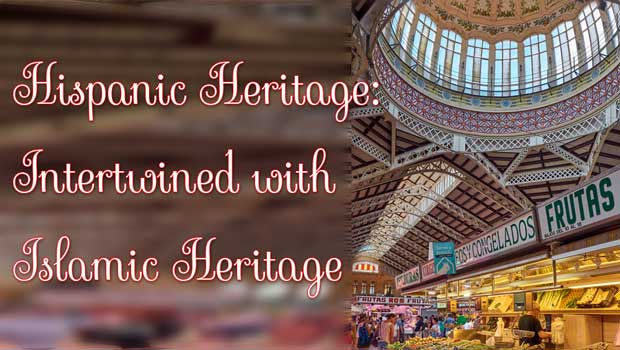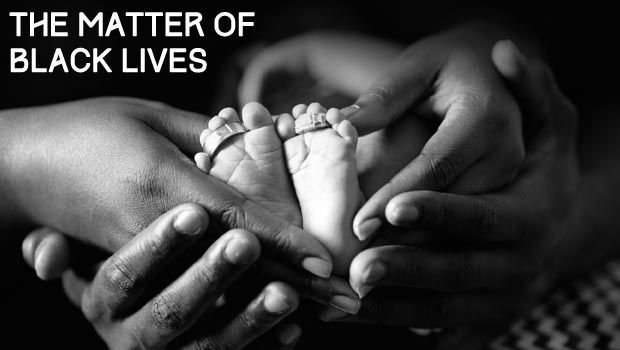Hispanic Heritage Month is observed annually in the United States from the 15th of September to the 15th of October. It began as Hispanic Heritage Week in 1968 and was upgraded to a month in 1989 to “honor the cultures and contributions of both Hispanic and Latino Americans as we celebrate heritage rooted in all Latin American countries,” according to the official government website (hispanicheritagemonth.gov). During this month, the media and educational institutions showcase Latin American artists, entertainers, academics, scientists, politicians, and others who have left an impact on the world. This month may seem of little significance to Muslims; however, Hispanic heritage and Islamic heritage are intertwined. The celebration of Hispanic, or Spanish, heritage is incomplete without mentioning the history and influence of the cultures that helped shape Latin America. A striking and significant part of the fabric of Hispanic heritage is Islamic.
This intertwining began just a few years after the death of Prophet Muhammad, peace be upon him, when Islam spread as far east as Persia and the Indus River and as far west as Africa and Europe, primarily Spain and Portugal. These two countries are responsible for the colonization of most of Latin America, what is now Mexico, Central and South America, and the Caribbean. Some Muslim historians such as At-Tabari and Ibn Kathir suggest that the earliest expeditions to Spain were made during the third caliphate of Uthman ibn Affan, around 653 CE, roughly 20 years after the Prophet’s death. However, it was in the year 711, 79 years after the death of Prophet Muhammad, peace be upon him, that Islam was definitively introduced to the Iberian Peninsula, to the land we now call Spain.
This major campaign was initiated by Musa Ibn Nusayr and his general, Tariq Ibn Ziyad, after hearing of the political turmoil there and the people’s grievances with its tyrannical rulers, the Visigoths. This took place during the era of the Tabi’een, or the successors to the companions of the Prophet, peace be upon him, the best generation second only to the companions in piety and worship. Tariq Ibn Ziyad traveled from the coast of Africa to Gibraltar with 7,000 soldiers. On April 30, 711 CE, they arrived with four ships. Although their army was only one-third the size of their opponents, they eventually managed to subdue the Visigoth army and conquer the cities of Toledo, Cordoba, and Granada, which came under the Islamic rule of the Umayyad caliph, Al Walid ibn Abd al-Malik, the grandson of Marwan ibn al-Hakam.
Freedom and Tolerance Under Muslim Rule in Spain
The driving force that allowed the Islamic empire to expand to the lands of Spain and Portugal was the same that began as a spark and eventually spread to the whole of the Arabian Peninsula. The Muslims were disseminating the faith for the sake of Allah and in order to earn a place in the Hereafter. The non-Muslims of Spain, mainly Christians and Jews, enjoyed a great degree of freedom and tolerance under Muslim rule. They were ensured protection and freedom to practice their beliefs without persecution. This marked a time in history when all three faiths prospered in many fields, including sciences, medicine, agriculture, and the arts. The Islamic presence in Spain lasted for almost 800 years, shaping everything about Spanish culture including values, customs, and language. This was the foundation for the Hispanic traditions we celebrate today.
This is not the only location with an Islamic infusion. Aside from the Muslims in North Africa, it is known that Muslims crossed into Abyssinia, what is now Ethiopia and Eritrea, from Arabia as early as six years before the Hijrah (614 CE), the migration of the early Muslim converts to Medina. Additionally, during the caliphates of Umar ibn Al Khattab and Uthman ibn Affan, military expeditions were sent to conquer the lands from Egypt to Tunisia, and these expansions continued throughout Africa, from east to west. Continuous interactions with Muslims, through trade and proselytizing, resulted in more and more African tribes embracing Islam and establishing their own Muslim communities.
Catholic Spain and Portugal, after having recaptured rule in the Iberian Peninsula by 1492, engaged in the Atlantic slave trade, seeking to colonize and settle in the recently “discovered” New World. African men and women, including Muslims, along the Western Coast of Africa were captured, sold, and traded like merchandise, and many of them were shipped to the Americas, especially to the Caribbean, Mexico, and South America. This continued from the 16th to the 19th century. The presence of these Africans in Latin America helped shape a multi-ethnic identity. A common Spanish proverb in Latin America is “Si no tiene de Dinga, tiene de Mandinga,” which translates to “If one does not have something from the Dinka, then one has something the from the Mandinka. This means that a Latino or Hispanic individual cannot deny their African ancestry, whether he or she came from the Dinka, a tribe native to Sudan, or from the Mandinka people of Mali. It is interesting to note that the vast majority of Mandinka are Muslims.
The expulsion of Muslims from Spain began after a presence of 800 years, towards the end of the 15th century and around the same time that Italian explorer Christopher Columbus and his crew, financed by the Catholic monarchs of Spain, came to the New World aboard Spanish ships. To fully understand the level of influence of Islam on Spanish culture, compare those eight centuries to the age of the United State which is only 244 years old. Muslims ruled Spain for more than twice as long as the U.S. has been in existence, yet no one can deny that the European and African descendants of slaves that are now living in this country are “American.” Therefore, the Muslims, like Jews and Christians, who were living in Spain for generations were indeed, Spanish, and not just a superficial “influence” that was completely wiped away by the Catholic Inquisition, persecution, and exile of Muslims.
What happened to these descendants of Muslim Spaniards? Sadly, some were forced to convert to Christianity (some even did it willingly to save themselves and their property), many were killed, displaced, and evicted from their lands, sent away to “where they came from” – likely North Africa, although they had never previously set foot in that region because they had been born and raised in Spain. Still, countless others made their way to the New World. Likewise, Muslim Africans were brought to the Americas as slaves and once slavery was abolished, they formed their own communities in every country of Latin America. Later mass migrations followed the dismantlement of the Ottoman Empire and subsequent instability in Ottoman controlled lands. Many Muslim immigrants resulted from wars and political strife in the Middle East and Far East, and still others were looking for a better way of life. This migration that began with the colonization of the New World has not stopped to this day, bringing the population of Muslims in Latin America to the millions, not counting the descendants of Muslim Spaniards and Africans who were stripped of their faith.
Loving Every Part of Our Muslim History
Given the historical evidence, Muslims should recognize that many Hispanics or Latin Americans are descendants of Muslim civilizations. If we claim, as Muslims, to love our history, we must own every part of it. We cannot be enchanted with the architecture and stories of Islamic Spain, and the wealth and influence of the Muslim empire of Mali and, yet, dismiss the fact that both live on in the New World.
Celebrating the contributions of Latin Americans is also to acknowledge that many political leaders, including 11 presidents, of Latin American countries have Muslim ancestry. It is to travel to these nations and see the Islamic influence in their architecture, arts, food, and in the very DNA of their people. It is also to know that some of the most popular Hispanic celebrities like Salma Hayek, Shakira, Emilio Estefan, and Jaime Camil are of Middle Eastern descent. It is to hear the stories of Latin Americans who remember a Muslim grandparent or great-grandparent or distant relative. It is to celebrate that Allah’s promise to His servants is true. Prophet Muhammad, peace be upon him, said: “This matter will certainly reach every place touched by the night and day. Allah will not leave a house or residence, but that Allah will cause this religion to enter it, by which the honorable will be honored, and the disgraceful will be disgraced. Allah will honor the honorable with Islam and he will disgrace the disgraceful with unbelief” (Ahmad).
As Muslims, we have a responsibility to reject trends in the U.S. that alienate and/or objectify Latinos or treat them as second-class citizens. We should also put an emphasis on bringing Hispanics or Latinos/Latin Americans back to Islam, or at least to educate them on their history, which is tied closely with Islamic history. In 2009, only one percent of Muslims identified as Hispanic. By 2018, that number had reached seven percent, according to the Institute for Social Policy and Understanding’s annual report, American Muslim Poll: Predicting and Preventing Islamophobia. Hispanics are returning to their roots. Is the wider Muslim community doing all it can to welcome them back? Let us begin by honoring Hispanic Heritage.






